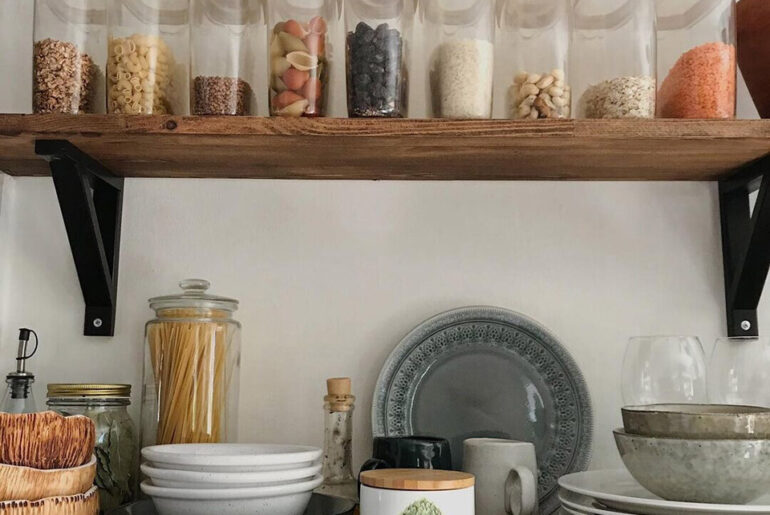These methods have been tested by our experts at home

Navigation:
The residue on a glass ceramic stove causes quite a bit of trouble. Matte and iridescent (like gasoline) spots on the touch-sensitive stovetop appear even for the most careful housewives. The glossy surface quickly loses its shine and becomes covered with unsightly residue that is not easy to remove.
Often, nothing helps to clean the stovetop – neither cheap stove cleaning agents nor the most expensive ones. You can spend a fortune trying various cleaning products that claim to remove residue. But it’s all in vain. That’s when folk life hacks come to the rescue – it turns out you can clean the stovetop from residue and ingrained dirt using handy items like baking soda, baking powder, lemon juice, and more.
Art-nordic.com spoke with experts, housewives, and cleaning service professionals and compiled 7 of the most effective ways to get rid of residue on a glass ceramic stovetop. These tips and recommendations will help you carefully remove both light spots and old stains – burnt oil, hardened grease stains, lime deposits, residue from spilled milk or coffee (the list could go on).
Important! Avoid metal brushes and abrasive cleaning agents – they can scratch the stovetop. Also, do not attempt to scrape off residue with the tip of a knife.
How to Clean the Stovetop with Baking Soda or Baking Powder
Baking soda is a versatile tool in the fight against stubborn stains. It can also help remove residue from the stove. Make a liquid paste from a small amount of baking soda (1-2 teaspoons is enough) and plain room temperature water. Then apply this mixture to the burnt areas and leave it for an hour. After the time passes, wipe the stove with a damp cloth.
If you don’t have baking soda at home, you can use baking powder. It should also help.
How to Remove Residue from the Stovetop with Regular Lemon Juice or Citric Acid
Lemon juice dissolves stubborn stains on the stove as effectively as baking soda or baking powder. Cut off a slice from a fresh lemon and thoroughly polish the area with residue. Let the lemon juice soak in (just a couple of minutes is enough), then wipe the stovetop with a regular sponge. If it doesn’t work, repeat the process several times.
In the fight against residue on a glass ceramic stovetop, citric acid can also help. Take 3 teaspoons of ordinary citric acid, add a small amount of hot water (just 50 ml is enough), and stir until completely dissolved. You’ll get a very concentrated lemon mixture. Put on latex gloves and apply this solution to the stubborn spots with a cotton pad.
— How long should you leave cotton rounds soaked in lemon solution on the surface of the spots? In simple cases, there’s no need to wait, just wipe the stove. In moderate cases, wait 5-10 minutes; in particularly difficult cases, leave the lemon solution on the stove for an hour or an hour and a half. The majority of the stains will be completely removed, — shares her personal experience the author of the BEST Homemaking blog on YouTube.
In rare cases, according to the expert, dealing with stains can take some time. Leave cotton rounds soaked in lemon acid on the stove overnight. To prevent the solution from drying out, cover the cotton rounds with regular plastic wrap. In the morning, wipe the stove with a damp cloth. The stovetop should be perfect.
How To Clean a Glass Electric Stovetop with Dishwasher Tablets
Stubborn stain won’t go away? From folk remedies, you can switch to more serious methods. Let’s try cleaning the stovetop with a dishwasher tablet (it’s convenient because you don’t have to spend money on special cleaning products for the stove).
You need to prepare a liquid paste – crush dishwasher tablets into powder and mix it with plain room temperature water (adjust the amount of water so that you get a thick mixture). Then apply this paste to the surface of the ceramic stovetop and leave it for 15 minutes. Afterward, wipe with a damp sponge and polish with a dry cloth.
How to Clean the Stovetop with a Special Scraper
This method is ideal for those who don’t want to experiment with folk remedies. You can buy a special scraper for cleaning glass ceramic stoves and touch-sensitive stovetops in any household department. There are scrapers with metal blades available on marketplaces, and their cost starts from $2 (you may find them even cheaper).
Such a scraper will help you get rid of ingrained stains, burnt deposits, old residue, and other nuisances that await each of us in the kitchen. It’s very easy to use. The scraper is somewhat similar to a spatula. With its help, you can scrape off any stains (not only from the stovetop) without any consequences such as scratches.
— You can apply some cleaning agent to the stovetop beforehand. Sometimes we apply regular vegetable oil to the stove so that the scraper cleans smoothly, — shares personal experience the manager of one of the cleaning companies.
How to Clean the Stovetop with a Melamine Sponge
A melamine sponge is an indispensable helper in any household. With its help, you can remove stains from many surfaces – walls, windowsills, mirrors, and even shoes. Yes, a melamine sponge is an abrasive, in its dry state, it’s like sandpaper, so you need to wet the sponge for any use (then it becomes soft and ready for use).
The author of the Clean My Space blog on YouTube personally tested the melamine sponge in the fight against residue on the stovetop. She managed to remove all the ingrained stains. Just be careful and be sure to read the instructions on how to use a melamine sponge.
How to Remove Matte Spots from the Glass Electric Stovetop with Vinegar
Sometimes, matte spots form on the stovetop that cannot be removed by any means – neither folk nor chemical. In this case, regular table vinegar (we recommend using 5%) can help you.
To remove matte spots from the stovetop surface, take a cotton pad and moisten it with vinegar. Then place it on the spot. If the spot is large, you’ll need several cotton rounds. Cover the completely spoiled surface with them and cover with plastic wrap on top.
Let the spot soak in vinegar for 10-15 minutes. Then remove the wrap and wipe off the residue with a vinegar-soaked pad.
Useful tip: turn on the ventilation during cleaning to avoid the smell of vinegar in the apartment, and be sure to lock the stovetop (so the burners don’t suddenly heat up).
How to Remove Stains from the Stovetop with Vegetable or Olive Oil
This method is suitable for dealing with light and insignificant stains. Apply a small amount of oil (olive oil works most effectively) to the stain. Leave it on for 30 minutes. Then wipe the stain with a sponge or scraper. A special scraper for glass ceramic stovetops, which we mentioned a little earlier, will be perfect.
Do you know any other ways to clean the stovetop? Write in the comments! And please share your experience of using glass ceramic stoves – the pros, cons, your observations.








